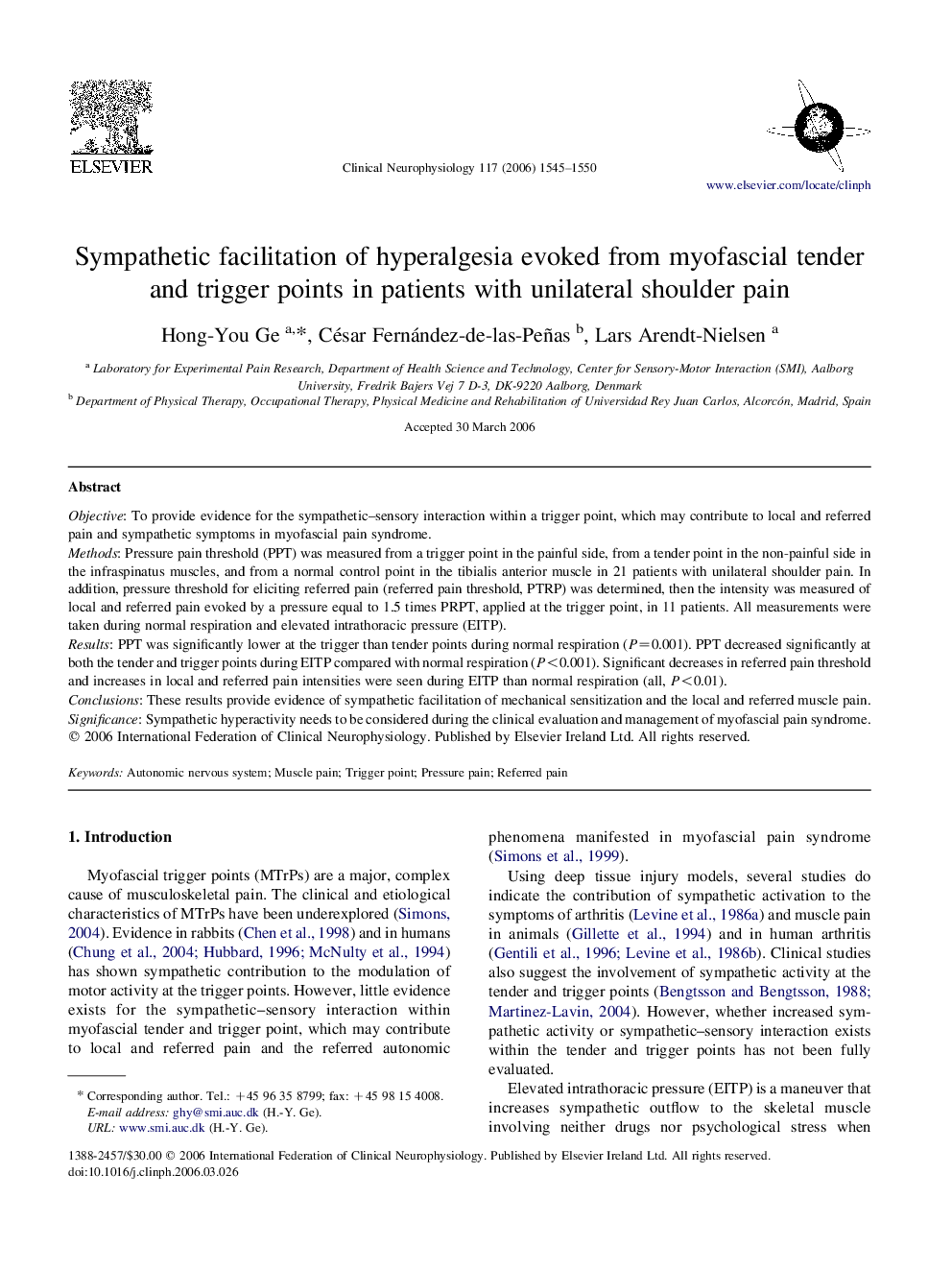| Article ID | Journal | Published Year | Pages | File Type |
|---|---|---|---|---|
| 3048110 | Clinical Neurophysiology | 2006 | 6 Pages |
ObjectiveTo provide evidence for the sympathetic–sensory interaction within a trigger point, which may contribute to local and referred pain and sympathetic symptoms in myofascial pain syndrome.MethodsPressure pain threshold (PPT) was measured from a trigger point in the painful side, from a tender point in the non-painful side in the infraspinatus muscles, and from a normal control point in the tibialis anterior muscle in 21 patients with unilateral shoulder pain. In addition, pressure threshold for eliciting referred pain (referred pain threshold, PTRP) was determined, then the intensity was measured of local and referred pain evoked by a pressure equal to 1.5 times PRPT, applied at the trigger point, in 11 patients. All measurements were taken during normal respiration and elevated intrathoracic pressure (EITP).ResultsPPT was significantly lower at the trigger than tender points during normal respiration (P=0.001). PPT decreased significantly at both the tender and trigger points during EITP compared with normal respiration (P<0.001). Significant decreases in referred pain threshold and increases in local and referred pain intensities were seen during EITP than normal respiration (all, P<0.01).ConclusionsThese results provide evidence of sympathetic facilitation of mechanical sensitization and the local and referred muscle pain.SignificanceSympathetic hyperactivity needs to be considered during the clinical evaluation and management of myofascial pain syndrome.
